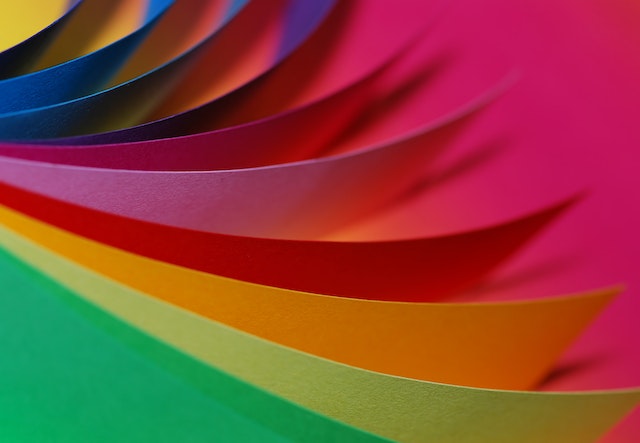Famous Biologist Timothy Goldsmith once said, “Color is not actually a property of light or of objects that reflect light. It is a sensation that arises within the brain.”
And these sensations are incredibly powerful. They affect our moods, memories, and decision-making. Various painters, including the greats of Picasso and Mark Rothko, have used the power of colors to evoke emotions. The idea that colors generate emotions and affect our judgments has been extensively studied and used in marketing and advertising campaigns across brands.
The impact of positive energy colors on our mental health goes much deeper than this. According to research by Samford University, wearing red in your kit will increase your chances of winning at sports. Multiple studies have shown the efficacy of blue light therapy in treating seasonal affective depression. In fact, a study centered in Japan found suicide rates decreased by a humongous 74% when blue light was installed at train stations.
So, colors have a profound effect on your mental health and well-being.
On that note, here are five positive energy colors and their meanings that can help you uptick your mood and environment. Let’s get started.

5 Positive Energy Colors For Your Environment
1. Orange
The common meanings attributed to the color ‘orange’ are:
- vitality,
- happiness,
- optimism,
- energy, and
- vibrance.
Since many naturally healthy foods are orange in color, it is no surprise that humans have come to associate positive meanings with it. Orange is the color of friendliness. It is one of the best positive energy colors to add to your kids’ room to evoke cheerfulness. It also signifies strength and self-confidence, making it a good choice for your wardrobe.
2. Red
The common meanings attributed to the color ‘red’ are:
- love,
- passion,
- boldness,
- luck, and
- excitement.
One of the spectrum’s most evocative and bold colors, red has been associated with love, passion, and excitement across cultures. It is touted as the color of boldness and power. In some cultures, it is also denoted as the color of luck.
As per research by Samina T. Yousuf Azeemi, red color is used in chromotherapy for patients with paralysis, physical exhaustion, cancer, and chronic rheumatism.
3. Green
The common meanings attributed to the color ‘red’ are:
- wealth,
- growth,
- balance,
- fertility, and
- harmony.
Green is one of the most soothing and refreshing positive energy colors. It signifies healing, growth, and harmony. The calming properties of the color have been used in ‘green rooms’ where people are made to sit in order to relax before appearing on television.
In nature, green is found to denote vegetation. It is also used as a symbol of balance and prosperity. Green is also associated with power, as it has been the color of the military since ancient times.
Read more: Therapeutic Art Activities To Help You Relax
4. Blue
The common meanings attributed to the color ‘blue’ are:
- serenity,
- reflection,
- wisdom,
- calm, and
- dependability.
Blue is mainly the color of water and the sky, which has solidified its association with calmness and tranquility. Since water reflects your image, blue is also regarded as the color that evokes self-introspection and reflection.
Darker shades of blue denote stability, dependability, and trustworthiness. This is why it is the symbolic tone for many legal, financial, and healthcare-related institutions.
5. Indigo And Violet
The common meanings attributed to the colors ‘indigo and violet’ are:
- intuition,
- spirituality,
- creativity,
- magic, and
- royalty.
In many cultures, the colors indigo and purple are associated with spirituality. Yoga practitioners use violet to signify the symbol of peace and enlightenment. It is also regarded as the color of royalty because purple dyes were extremely expensive and only used by elites back in time. Purple is also a symbol of creativity and is known to evoke vivid imagination and wisdom.
Read more: Soothing Your Screens – Cool And Calming Wallpapers For iPhone
Conclusion:
Colors are a powerful form of non-verbal communication used across cultures and countries. They affect our mood, decision-making, creativity, and memory. Different positive energy colors are also used for medical treatments like chromotherapy and light therapy. We hope this list of positive energy colors will help you choose the best hues for yourself and your environment.
Do you know that the color of your clothes affects your mood too? To learn more about it, click here.
To continue learning about mental health daily, subscribe to Your Mental Health Pal.

